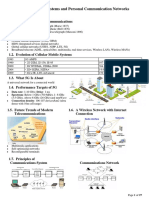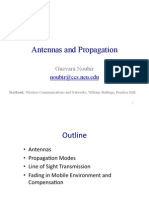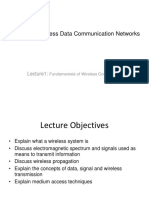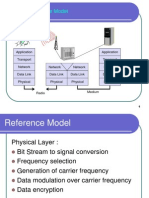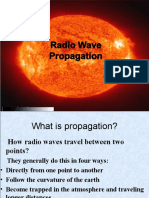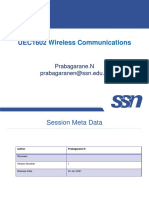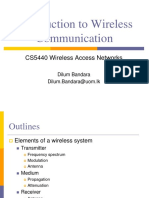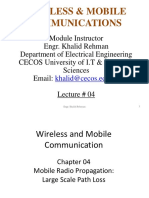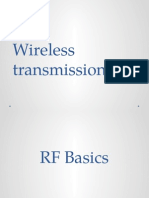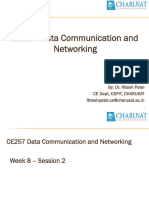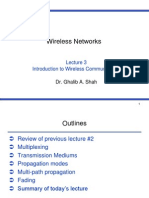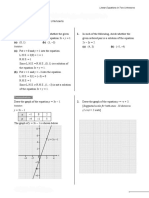0% found this document useful (0 votes)
15 views30 pagesModule 2 - Part I
The document outlines the course EECE5576: Wireless Communication Systems, detailing various aspects of wireless propagation channels, including free space propagation, propagation mechanisms, and channel characterization. It discusses the challenges of modeling wireless channels, such as signal power received and signal distortion, and describes different communication methods like electromagnetic waves and acoustic signals. Additionally, it covers the properties and applications of various frequency bands, from radio frequencies to optical wireless communications.
Uploaded by
kishore9224Copyright
© © All Rights Reserved
We take content rights seriously. If you suspect this is your content, claim it here.
Available Formats
Download as PDF, TXT or read online on Scribd
0% found this document useful (0 votes)
15 views30 pagesModule 2 - Part I
The document outlines the course EECE5576: Wireless Communication Systems, detailing various aspects of wireless propagation channels, including free space propagation, propagation mechanisms, and channel characterization. It discusses the challenges of modeling wireless channels, such as signal power received and signal distortion, and describes different communication methods like electromagnetic waves and acoustic signals. Additionally, it covers the properties and applications of various frequency bands, from radio frequencies to optical wireless communications.
Uploaded by
kishore9224Copyright
© © All Rights Reserved
We take content rights seriously. If you suspect this is your content, claim it here.
Available Formats
Download as PDF, TXT or read online on Scribd
/ 30




